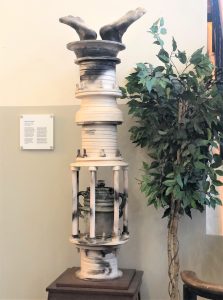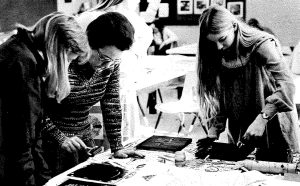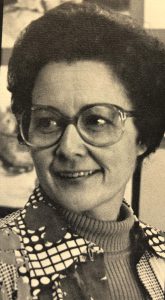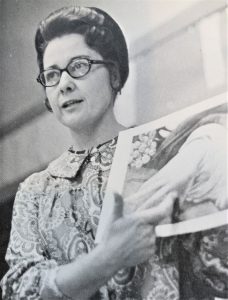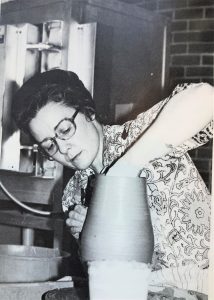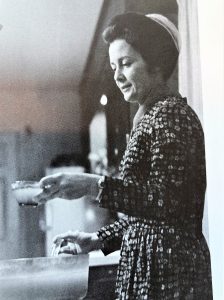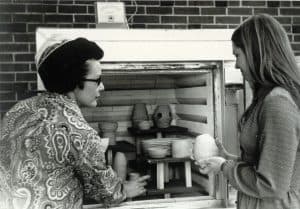Historia del programa de arte
Esther Kniss '49 Augsburgo Fundó el programa de arte de Eastern Mennonite High School en 1971 y enseñó durante los siguientes nueve años. Esther fue la primera graduada en arte de Eastern Mennonite College en 1972, donde su esposo, Myron, era presidente. Siguió estudios de arte después de considerar inicialmente una especialización en música, que era más aceptable en la iglesia en general en ese momento. Obtuvo una maestría en escultura de la Universidad James Madison en 1978.
Esther fue un modelo a seguir y un estímulo para cientos de estudiantes durante su mandato como maestra. Siguió siendo una defensora del programa de arte en EMS durante toda su vida, alentando a los futuros maestros a lo largo del camino. Entre ellos se encontraban su sucesor, Herb Weaver '75, que enseñó de 1980 a '85, y Barbara Gautcher, que enseñó durante los siguientes 32 años.

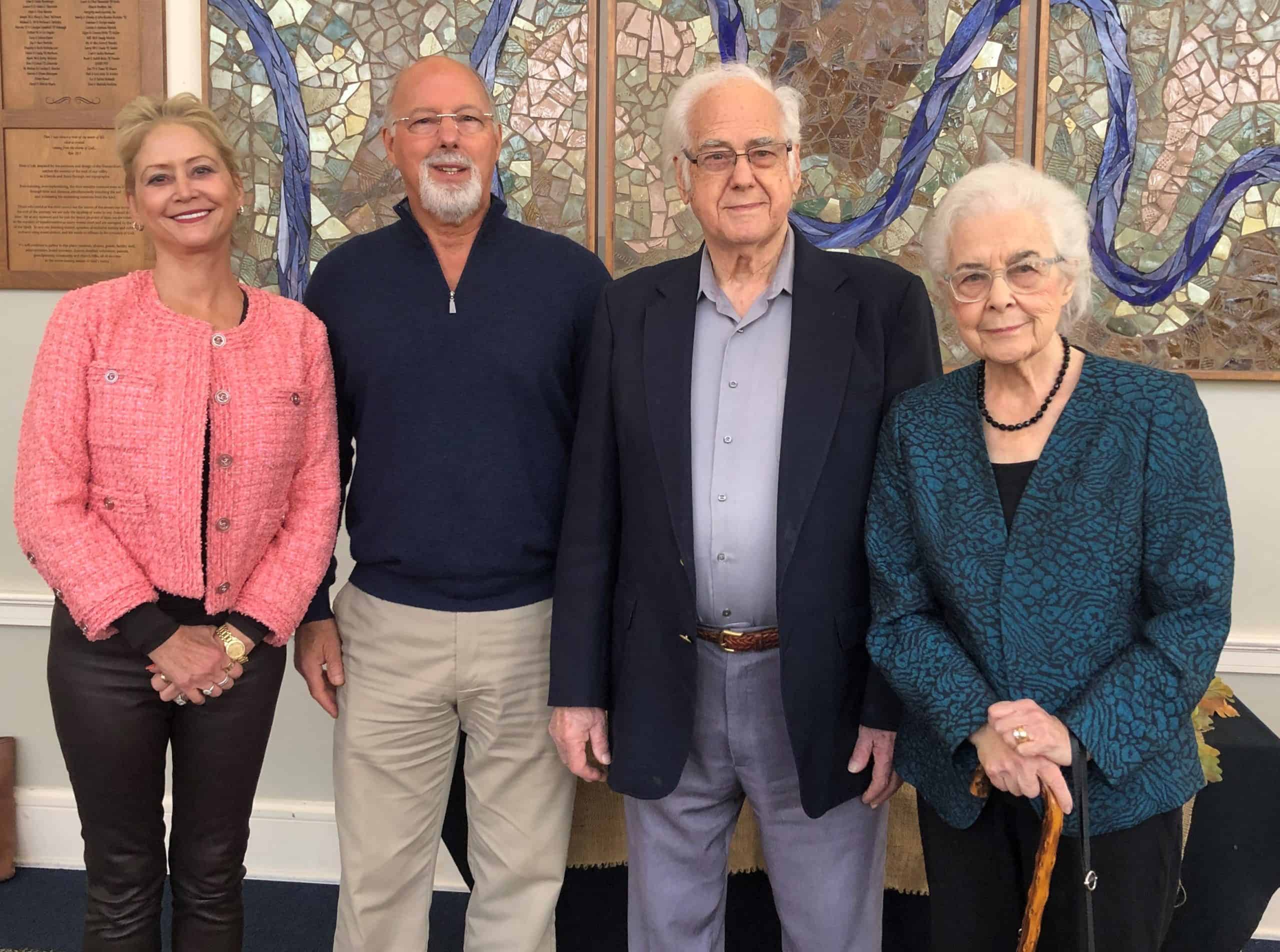

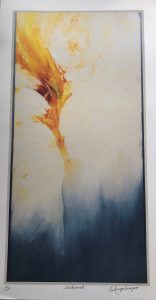
Shekinah
Esther pintó Shekinah durante su mandato como maestra cuando el director Samuel Weaver le pidió que creara algo que atrajera a la gente al Espíritu Santo en el espacio de la Capilla, ahora los Comunes. En 2005, cuando se construyó el nuevo auditorio (diseñado por la arquitecta Lori Snyder Garrett), Shekinah se trasladó al pasillo de entrada frente a la sala de arte. En 2022, la pintura se trasladó al auditorio donde, una vez más, puede convocar a los fieles a un espacio sagrado. Debajo cuelga una placa con la declaración del artista.
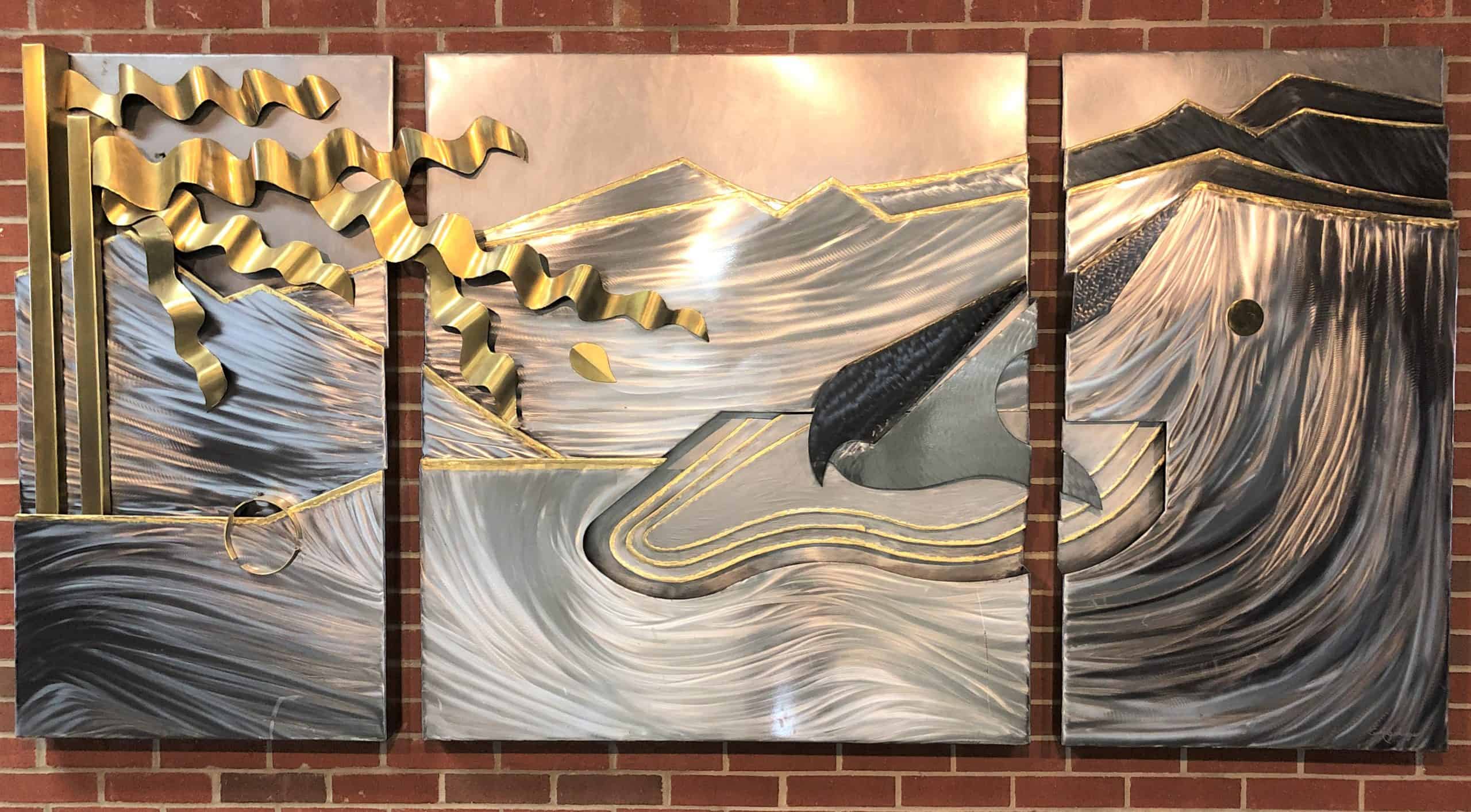
Shalom
En 1998, los líderes estudiantiles de EMHS encargaron a Esther la creación de una obra de arte que colgaría en la pared donde la ampliación del comedor se une con el edificio original de 1964. La pieza, Shalom, está construido con varios metales y los estudiantes, el personal y los profesores lo ven a diario de camino a almorzar.
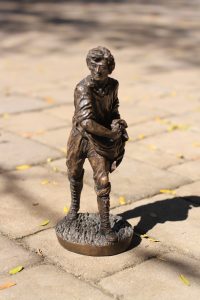
El sembrador
Esther donó la escultura número 87 (de 200) de su creación El sembrador, que hace referencia a la parábola del sembrador, contada en los evangelios de Mateo, Marcos y Lucas. La escultura recuerda a EMS que es un lugar de suelo fértil donde las semillas del conocimiento pueden florecer y dar frutos.
Una infancia en la India
Los primeros años de infancia de Esther en la India fueron clave para su formación como artista y creadora. Estos son algunos extractos de recuerdos que compartió en una entrevista de 2020 con Gloria Diener.
Cuando yo era pequeña, nuestra familia vivía en un pueblo de la selva. Mi primer recuerdo es el de mí sentado en el regazo de mi padre mientras hacía dibujos.
A menudo hacía personitas con palos... Conseguía trapos, los rompía y vestía a las personitas que había hecho con palos. Se los hacía a mis amiguitos indios porque no tenían juguetes. Y luego jugábamos en el arenero que mi padre había hecho... A menudo llevaba agua para que pudiéramos crear pequeños pueblos y aldeas...
Tenía la necesidad de crear mientras estaba en el internado, por lo que mi madre me proporcionó hilo y agujas de tejer. Mi ayah [sirvienta] me había enseñado a tejer... Nuestro internado estaba en lo alto de una colina en Darjeeling, en las montañas del Himalaya, el lugar más hermoso del mundo. Podíamos ver el Monte Everest, toda la cadena de montañas cubiertas de nieve, todas las mañanas...
Durante el tiempo que regresé a mi casa después del internado (tal vez a los 10 u 11 años), invitaba a los niños de la aldea a que me ayudaran a construir aldeas... Había visto a los indios fabricar ladrillos para construir edificios, así que mezclaba arcilla como lo hacían ellos. usando mis pies y agregando paja y un poco de arena y pisoteando la mezcla con mis pies.
También sentí la necesidad de observar, de mirar de cerca a las personas que me rodeaban. Nuestro complejo tenía una pared, tal vez de unos 4 pies de alto en todos sus lados, hecha de ladrillos. Del otro lado del muro había un pequeño árbol que aún puedo ver en mi memoria. Yo saltaba a la pared y me subía al árbol y me sentaba... sólo para ver a los culis [trabajadores contratados] pasar al otro lado de la pared con yugos sobre sus hombros y una carga en cada extremo del yugo, mientras caminaban con un trote rítmico... Me fascinaba su trabajo y los músculos de sus espaldas, brazos y piernas. Sólo vestían taparrabos, y atribuyo mi habilidad para hacer cosas sin modelos a las horas que pasaba cuando era niño observando a los culis.
Más allá de los años de Ester
Tejedor de hierbas Era uno de los estudiantes de Ester. Se graduó en 1975, obtuvo una licenciatura en arte de la Eastern Mennonite University y luego enseñó arte en EMHS de 1980 a 1985, mientras obtenía su maestría en bellas artes de la Universidad James Madison. Luego pasó a enseñar en la Universidad de Brescia en Owensboro, Kentucky, Bethany College en West Virginia y más tarde en Georgia Gwinnett College cerca de Atlanta. A lo largo de su carrera, enseñó cerámica, diseño, historia del arte, educación artística y apreciación del arte.
Ha permanecido conectado con la escuela. A partir de 2006, creó tazas únicas para cada estudiante de último año. Ver imágenes y un artículo. here. En primavera Capilla 2022, contó la historia de su serie de la Capilla de la Semana de Renovación Espiritual en 2000 que resultó en una escultura, "Walk the Walk" que aún permanece en el vestíbulo del auditorio (en la foto, a la derecha).
